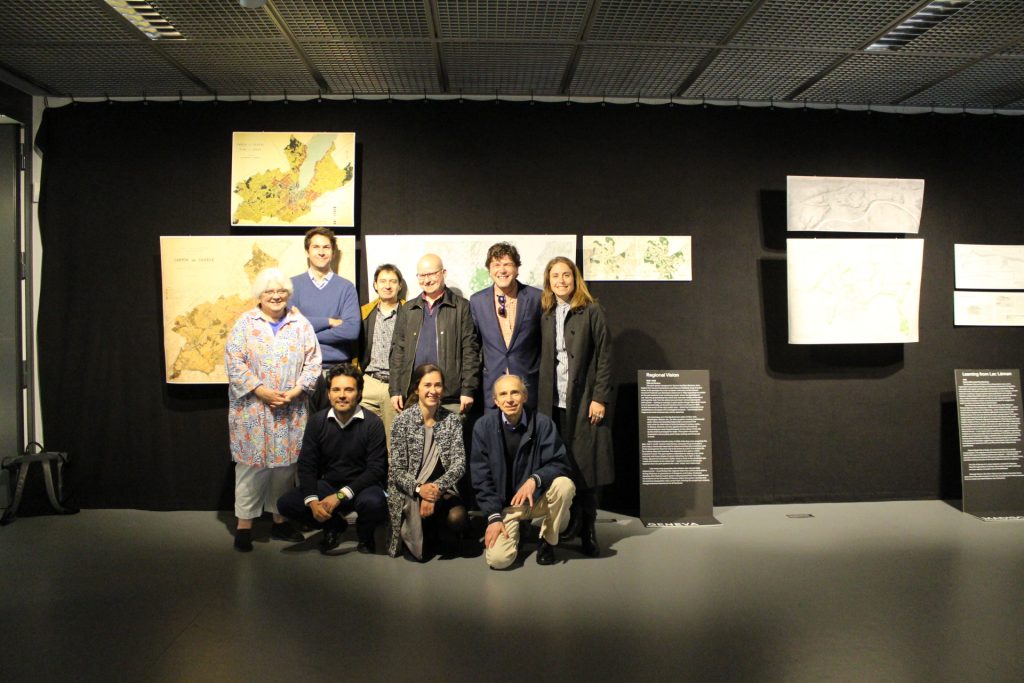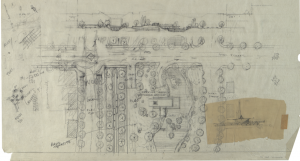Symposium ‘Ghost Writers: Collectors, Creators, Archives, and Memory’ related to the exhibition The Living City: Park Systems from Lausanne to Los Angeles
12th of June 2019
9:00 coffee
9:30-17:00 symposium
Archizoom, SG building, EPFL
Chaired by Janet Parks (Curator of Drawings and Archives, Avery Library, Columbia University, retired)
Moderated by Matthew Skjonsberg (Curator, The Living City: Park Systems from Lausanne to Los Angeles, EPFL)

Invited speakers:
Salvatore Aprea (Director, ACM Archive EPFL)
Gian Piero de Bellis (Founder of World Wide Wisdom Research Center and Archive, St. Imier)
Denise Bertschi (Doctoral Researcher, EPFL-lapis)
Sergio Figueiredo (Assistant Professor of Architectural History and Theory, TU-Eindhoven)
Martin Hartung (Doctoral Fellow at the Chair of Prof. Dr. Philip Ursprung, ETHZ-gta)
Jana Konstantinova (Doctoral Researcher, EPFL-lapis)
Janet Parks (Curator of Drawings and Archives, Avery Library, Columbia University, retired)
David Peyceré (Centre d’archives d’architectures contemporaines du XXe sièle)

Design practice depends heavily on display of drawings or photographs – representations of buildings and landscapes – from architecture schools to competitions and from client meetings to the final publicity of a completed project. Archives and other records of memory serve an essential role in architectural creation as well in that designing a real building, one that stands solidly, is attractive, and functions – in fulfillment of the Vitruvian triad – is a complex process and having access to as many sources as possible of how other architects handled these questions is fundamental to the overall process and design and the ongoing education of an architect. While designers are always looking for their next commission, their antennae are also open to interesting projects, whenever they were built.
The exhibition “The Living City: Park Systems from Lausanne to Los Angeles” displays works that come from archival collections and are assembled with the intention to open and influence discussion about landscape issues still of great importance. Exhibitions about historical architecture and surviving documents that represent or interpret those works speak to an essential part of the architectural consciousness. Indeed most architects have an internal archive of buildings seen or experienced that are fundamental to their understanding of what a building is for them.
There is great interest in archives but little interest in how they are formed, who saved the material, how did the archive find an institutional home. We place more value on knowing the artisans who made our cheese or wine than the individuals who selected and developed archives, our society’s repository of our history, or on the stories of archives themselves, their backstory before they are registered, processed, and made available for research. Architecture museums have become one stage of the architecture profession as it aims to elucidate the professional concerns of the architect, with the word curator becoming ever more openly associated as provocateur, promoter, or tastemaker. In the introduction to Sergio Figueiredo’s history of the NAI, Bernard Colenbrander wrote about the nature of collections and museums:
“Memory turns into history and we are not automatically aware of the consequences: all museum directors, art historians and antiquarians will follow their own approach to try to realize a connection with this history and they deserve to be questioned about that with curiosity and maybe even suspicion.”
One could say that an archive, especially a large archive containing many collections of different architects, is a work of fiction in that it is not a replica of a particular life or work, but a sampling, although the more complete and informative the better. The curator has assembled, sometimes selected, and responded to the availability of surviving archives of individual architects or firms. The collecting curator is building a collection based on evaluation of what is available, unlike the exhibition curator who can call for new work based on an inspirational or aspirational theme. In the historical archive, the scholar comes to recognize gaps, mis-directions, and misperceptions in the archive when researching a subject and then presenting that work, either in written or verbal form. Archives and one’s immersion in them give insight into how the world is constantly changing. One act, one fact contains so much history and effort in lives and events. Archives require time to digest what happened, and consider again how one arrived at our present time.
The work of our speakers today touches different aspects of the archive both as fact and fiction. Architectural archives with their own marketplaces, however specific, now have a long enough history to see institutions and markets come and go, which will be addressed by two talks. One speaker created an archive de novo on philosophical and social ideas unencumbered by an outside institutional complex. Finally, several speakers will relate histories of specific archives and their destiny, survival and character, their stories embodying Colenbrander’s quote, “Memory turns into history and we are not automatically aware of the consequences.“
Janet Parks